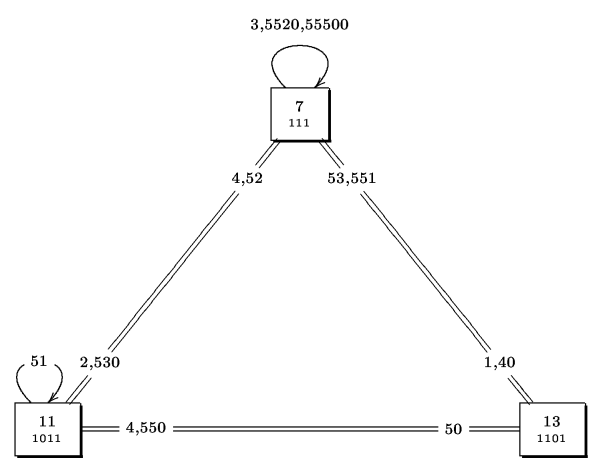
Back to Hans Lundmark's main page
This is juggling theory. If you're clueless, go to the Siteswap help pages at the Juggling Information Service, or to Siteswap.org, or to Wikipedia: Siteswap.
PDF version (180 KB), DVI version (460 KB).
This document (10 pages) contains nicely typeset simplified siteswap state diagrams, from which one can read off at a glance all possible vanilla siteswap patterns for 3 / 4 / 5 ball juggling using throws of height 7 or less. The diagrams are also very useful for finding transitions between different siteswaps. Instructions are included, but familiarity with siteswaps is assumed.
This is a translation of the document into French, by Clément Bruneau.
Here is an image of the smallest nontrivial diagram in the document. This already includes most well-known 3 ball juggling patterns, like 3 (cascade), 51 (shower), 441, and 531. Any loop in the graph gives a valid siteswap, and vice versa.
Double lines represent arrows going in both directions. For example, to go from the ground state (the box labelled 7/111) to the shower state (the box labelled 11/1011), throw 4 or 52. To go back, throw 2 or 530.

Technical note: The multithrow sequences pass via excited states that (unless one throws higher than 5) have either just one arrow leading in or one arrow leading out. These states have been eliminated here, which simplifies the diagrams considerably. For example, the non-simplified diagram for 3 balls and height 5 has ten states instead of just three; it can be found in Section 7 of Allen Knutson's Siteswap FAQ (as ASCII art) or in the Wikipedia article about Siteswap (with a better picture).
Original version 2003-01-23. Last modified 2019-11-29. Hans Lundmark (hans.lundmark@liu.se)